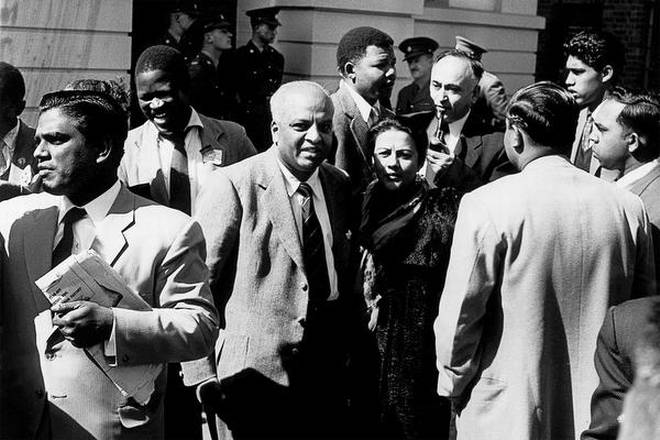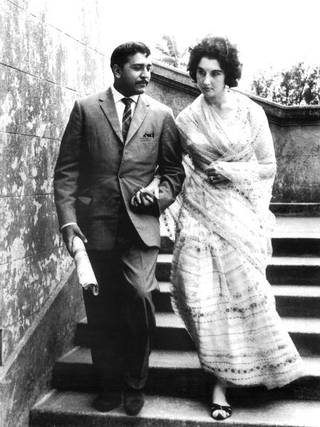SOUTH AFRICA :
Born into a family of ‘coolie Indians’, Ranjith Kally was important in documenting the role of Indians in the anti-apartheid movement

For most Indians with some awareness of the history of South Africa, India’s connection with the country begins and ends with Mohandas Karamchand Gandhi. As Nelson Mandela famously put it, India sent Mohandas to South Africa and received a ‘Mahatma’.
If the province of Natal was one of several places around the globe where the epic of Indian indentured labour was writ large, South Africa was nearly distinct as the site of an unusual and inspiring solidarity between black people and Indians in the equally epic struggle against racial oppression. Photojournalist Ranjith Kally, who died at the age of 91 in Johannesburg this June, was the great chronicler of both Indian life in Natal and the resistance to apartheid.
Kally was born near Durban in 1925 into a family of ‘coolie Indians’. His grandfather worked on a sugar plantation; his father, likewise, left for the fields early every morning. As was common in his generation, Kally was educated only up to Class VI. He worked in a shoe factory for 15 years and stumbled upon a Kodak Postcard camera at a rummage sale. In 1956, Kally procured a job as a photographer with Drum, a magazine that had been launched to give expression to the lives of black and coloured people.
Chronicling a struggle
Kally’s first photographs of anti-apartheid figures would be taken in the late 1950s. One of his favourite subjects was Monty Naicker, an Indian who trained as a doctor before turning to political activism. At a break during Pretoria’s Treason Trial in 1958, Kally captured Naicker with a young Mandela and the venerable communist leader Yusuf Dadoo in the background. Kally’s many photographs of Fatima Meer, another titanic figure in the anti-apartheid struggle, furnish insights both into how women assumed political roles in the public sphere and the little-discussed role of South African Indian Muslims in shaping secular narratives of freedom.
In one photograph, taken in the early 60s, Kally seated Meer’s daughters, Shamin, Shehnaaz and Rashid, around their buoyant-looking mother in Durban’s Botanical Gardens. The photograph was intended for Ismail, Meer’s husband, who was then in detention, as a keepsake of his family. There is no hint here of anxiety, fear, or the oppressiveness of racial terror. But Meer was also godmother to Nelson and Winnie Mandela’s children, giving them a home and hope at a time of despair.
Kally knew better than most that the story of the anti-apartheid struggle was not only one, or even mainly, of ‘great’ figures. In a rigidly racist society, the occasions for transgression were many and the outcome generally was painful for those animated by the desire for equality and social justice. The anti-miscegenation laws were severe, but, as one of Kally’s most stunning photographs shows, this did not prevent Syrub Singh and the dazzling Rose Bloom (seen emerging from a court hearing) from joining hands in matrimony.
Courting the everyday
What is striking in Kally’s large and still largely unknown body of work is his attentiveness to the quotidian life of Indians in and around Durban. Close to half a century after the end of the indentured system, the greater majority of Indians still lived below the bread line. In one photograph, an Indian woman scrubs dishes outside a group of shacks; a very young girl, clutching a toddler, stands by her side. Kally closely observed young Indian boys and girls working in the cane fields.
His 1957 photograph, ‘Children Gotta Work’, is illustrative of not only Kally’s approach to the grittiness of Indian life in Natal but of the self-reflexivity in much of his work. Four Indian children, some unmistakably teenagers, are on their way to work in the fields. Shovels are flung across their shoulders; two of them firmly grasp lunch boxes in their hands. They walk barefooted in the morning light. The photograph resonates with pictures of Partition, but there are also shades of the historic march of Indian miners from Natal to the Transvaal in 1913. Workers on the move, the daily walk, the look of determination: all this is part of the ensemble.
I didn’t know Kally well enough to say whether he was a man of sunny optimism, but his photographs nevertheless suggest an eye for the whimsical and a zest for life. The whimsical touch is nowhere better captured than in his photograph of a boy with a large tortoise on his head.
The wide grin on the boy’s face reveals the unmistakable fun he is having in ferrying his slow-moving companion. The boldest expression of this element of joie de vivre in Kally’s work is a photograph called ‘The Big Bump’. Two men, both amply endowed at the waist, are rubbing against each other. Each man seems to be saying, ‘My tummy is larger than yours, and all the better for it.’ Kally’s camera paves the way for understanding the extraordinariness of the ordinary.
That is not an inconsiderable gift.
Professor of History at UCLA, the author has the distinction of being listed among the 101 Most Dangerous Professors in America.
source: http://www.thehindu.com / The Hindu / Home> Society> Spotlight – History & Culture / by Vinay Lal / July 08th, 2017









